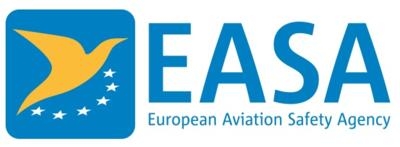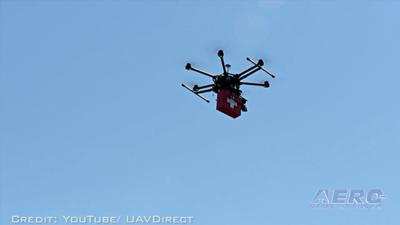Thu, Dec 24, 2015
Intended To Provide A 'Framework' For Ensuring Safety While Enabling The Industry To Grow
EASA has published a "Technical Opinion" on the safe use of drones in Europe’s civil airspace. The EASA Technical Opinion sets the direction to be followed for all future work to be done to ensure unmanned aircraft are operated safely and interact safely with other airspace users. The aim is to provide a framework that is proportionate to the activity, ensuring safety and at the same time enabling this innovative industry to continue to grow.

The opinion also serves as guidance for the European Union Member States that have no rules for small unmanned aircraft or plan to modify their existing ones, to ensure consistency as much as possible with the intent of the future EU rules. It also provides a roadmap presenting the steps to be taken in the future.
"Unmanned aircraft and the technological innovations they bring, are changing quickly the landscape for aviation. The Agency proposals ensure safety remains a priority while allowing proportionality and flexibility for new innovations," said Patrick Ky, EASA Executive Director.
The opinion includes 27 concrete proposals for a regulatory framework for operating all unmanned aircraft irrespective of their mass. The proposals focus more on how the drones will be used rather than their physical characteristics. The proposal establishes 3 categories of operation: ‘Open’, ‘Specific’ and ‘Certified’ with different safety requirements for each, proportionate to the risk. Most of the drone usage will belong to the ‘Open’ category which is foreseen for operations with limited safety risk, requiring a minimum amount of safety rules, overseen by law enforcement agencies. One of the key measures for this category will be limitation ‘Zones’, geographical areas in which use of drones will be limited or not allowed at all. To prevent unintended flight in restricted flight zones, a functionality automatically generating geographical limitations is also foreseen (i.e. geo-fencing). The more complex and risky the operation is, the more
stringent the requirements will be. For example the requirements for ‘Certified’ operations are similar to those for manned aviation.

The Technical Opinion follows the principles established by the European Commission in the Aviation Strategy published on 7 December 2015.
EASA will now work on the most appropriate set of tools - development of rules, guidance material or safety promotion – depending on what is more appropriate to each category in order to meet the overall objective to ensure safety while letting innovation develop.
(Image from file)
More News
With Testing Soon Complete, Launch Preparations Begin in Earnest Sierra Space's Dream Chaser has been put through the wringer at NASA's Glenn Armstrong Test Facility in Ohio, but w>[...]
Takeoff Roll The process whereby an aircraft is aligned with the runway centerline and the aircraft is moving with the intent to take off. For helicopters, this pertains to the act>[...]
“We’re proud of the hard work that went into receiving this validation, and it will be a welcome relief to our customers in the European Union. We couldn’t be mor>[...]
"Aircraft Spruce is pleased to announce the acquisition of the parts distribution operations of Wag-Aero. Wag-Aero was founded in the 1960’s by Dick and Bobbie Wagner in the >[...]
IDENT Feature The special feature in the Air Traffic Control Radar Beacon System (ATCRBS) equipment. It is used to immediately distinguish one displayed beacon target from other be>[...]
 Sierra Space Repositions Dream Chaser for First Mission
Sierra Space Repositions Dream Chaser for First Mission ANN's Daily Aero-Term (05.10.24): Takeoff Roll
ANN's Daily Aero-Term (05.10.24): Takeoff Roll Aero-News: Quote of the Day (05.10.24)
Aero-News: Quote of the Day (05.10.24) Aero-News: Quote of the Day (05.11.24)
Aero-News: Quote of the Day (05.11.24) ANN's Daily Aero-Term (05.11.24): IDENT Feature
ANN's Daily Aero-Term (05.11.24): IDENT Feature




